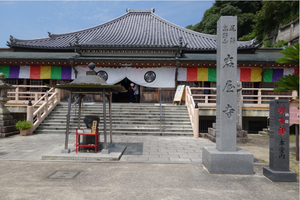Documentation:Library:Circle/FROGBEAR Title metadata
Overview
This document describes how to record titles for both textual and non-textual materials. The below graphic explains how to decide whether to create a transcribed or a devised title for the item.

Titles for books and manuscripts
Record the title as seen on the title page. Punctuation and spelling should be preserved. Only capitalize the first word and proper names. These are referred to as transcribed titles.
EXAMPLE:

Title: Family research report
Whenever possible, give the English version of a title. If the title is in a language other than English, transcribe it in the appropriate Romanization (e.g., Pinyin for Chinese) in parentheses and optionally follow this with the title in the original script.
EXAMPLE:

Title: The Peach Blossom Fan (Taohua shan 桃花扇)
Titles for other items
If a work other than a book or manuscript has a clear title of its own, integral to the work, use that title as described above. This will be the case for many paintings, calligraphic works, maps, and inscriptions. Many other works, including decorative art, cultural artifacts, some maps, diagrams, archaeologically-excavated objects, ethnographic materials, and some buildings, do not have titles or names. For these works, a descriptive title should be constructed or devised to facilitate identification by users. These are referred to as devised titles.
EXAMPLE:

Title: Main building of Iwayaji temple (岩屋寺)
Basic Guidelines for Devised Titles
Describe what the image is or what is seen in it. Devised titles may refer to subject matter, materials, form or function of objects depicted.
When constructing devised titles (images/photographs, audio, video, etc.), keep them simple and neutral. Less is more.
- Use a concise, descriptive title written in English.
Use the following elements when possible:
- Identify the type of image (person, place or thing) or form of material, e.g. view, sculpture, building
- Identify main subjects(s) depicted (i.e. persons, events, activities, and objects)
- Add geographical locations(s) depicted, if known
- If applicable, add year of the depicted object (if known)
Other hints:
- Title is a free-text field, meaning that retrieval on it will not be optimal. So important keywords in the title may be repeated in the Subject, Spatial Coverage or Description fields to ensure that they will be indexed and more easily discovered.
- If a photo shows an inscription or other work with a clear title, use the inscription's title if that is the principal content of the photo. If not, devise a descriptive title as indicated above
- When a photo is of part of a larger whole, record the Title about the whole.
- For an audio or video recording of a conversation, include the topic(s) of discussion.
- Devised titles may express uncertainty, if necessary.
If a work/subject is commonly known in English, give the English name and add Romanized/Asian translations in parentheses. If a work/subject cannot be translated into English or is not conventionally known by an English name, the Romanization can be used, with the Asian characters given in parentheses.
EXAMPLE:
FROGBEAR example in Open Collections

Title: Interior wood structure, Great Hall of the Three Clarities (Sanqing dadian 三清大殿), Fengxian guan (奉仙觀)
FURTHER EXAMPLES:
- Title: Workers in a Field, probably from a French Book of Hours
- Title: Neko Harbor, Antarctica, 2007
- Title: In Chinatown, Vancouver, B.C.
- Title: Portrait of women posing with croquet equipment
- Title: Anarchist bombing, Union Square, New York City, March 1908
- [for an shrine]
- Title: Small shrine in precincts of Takuhi Shrine (Takuhi jina 焼火神社) built into rock wall with Buddhist deity and lion-dogs (koma-inu 狛犬)
- [for an Indian sculpture]
- Title: Seated Buddha Preaching the First Sermon
- [for a sculpted head]
- Title: Portrait Head of … (add name of person or statue)
- [for a Japanese screen]
- Title: Screen with Night Rain on Lake Biwa
- [for a vase decorated with flowers]
- Title: The Magnolia Vase
- [for a Chinese temple, title refers to the denomination and style]
- Title: Taoist Temple
Capitalization
For devised titles in English, capitalize the first word and all nouns, pronouns, verbs, adverbs, adjectives, and subordinate conjunctions; use lowercase for articles
For titles in other languages, follow capitalization rules of that language or appropriate scholarly conventions.
- Avoid abbreviations.
- Avoid initial articles.
References
Adapted from: Cataloging cultural objects : a guide to describing cultural works and their images. Chicago: American Library Association, 2006.